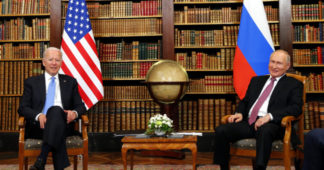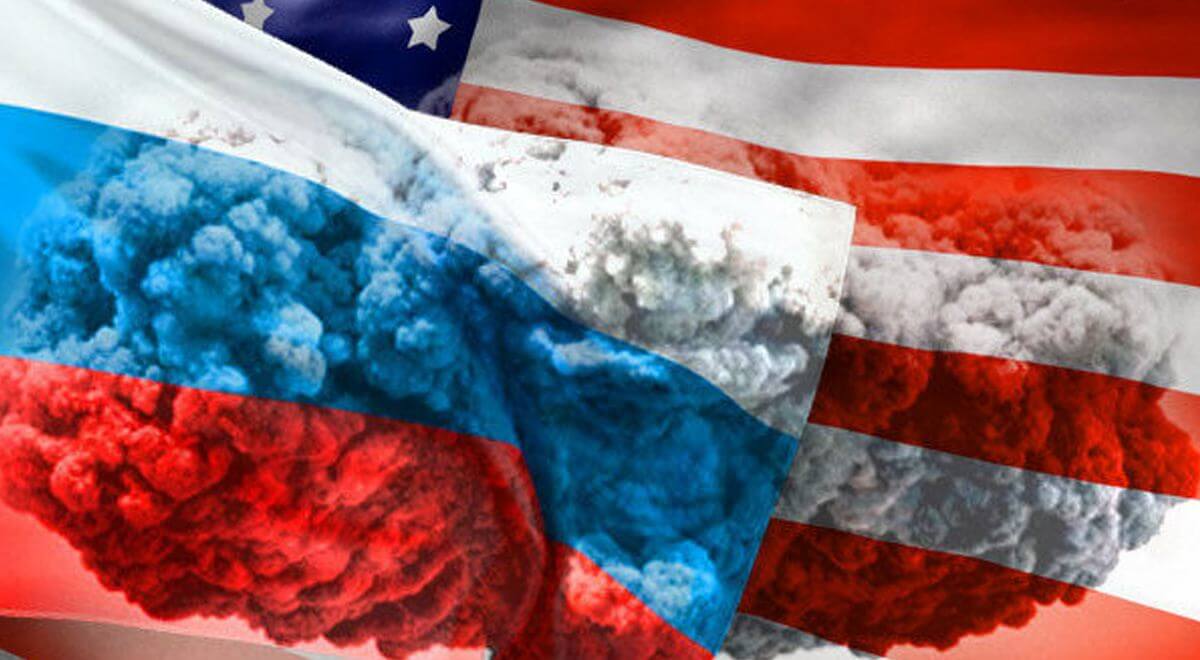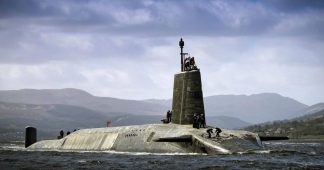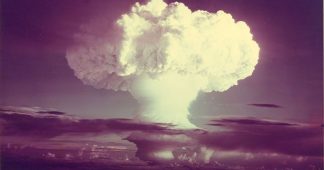By Tara Drozdenko
November 8, 2023
Shortly before Russia launched its war against Ukraine last year, leaders of five nuclear weapons states reaffirmed a statement first made by Presidents Ronald Reagan and Mikhail Gorbachev at their Geneva summit in 1985. China, Russia, France, the United Kingdom, and the United States stated jointly and unequivocally: “We affirm that a nuclear war cannot be won and must never be fought. As nuclear use would have far-reaching consequences, we also affirm that nuclear weapons—for as long as they continue to exist—should serve defensive purposes, deter aggression, and prevent war.”
Indeed, nobody wins a nuclear war. And that’s precisely why the recent report by the Congressional Commission on the Strategic Posture of the United States encouraging a new arms race and nuclear buildup is so deeply disappointing.
The commission’s report asserts that the United States must prepare to fight and win simultaneous conventional wars with China and Russia, and, if that objective cannot be met, the United States must “increase [its] reliance on nuclear weapons to deter or counter opportunistic or collaborative aggression.” The scenario of simultaneous aggressions against the United States by two nuclear-armed countries could become a self-fulfilling prophecy: If followed, the commission’s recommendations for greater reliance on nuclear forces would drive a global nuclear arms race, increase global tensions, and increase the risk of conflict.
Learning the lessons. Arms race dynamics are well known. We saw it during the Cold War between the United States and the Soviet Union. Pursuing a future where the United States is, again, continuously trying to leap-frog Russian, and now also Chinese, nuclear capabilities will be a waste of time, energy, creativity, and money. The inevitable action-reaction cycle of such dynamics will push spending on nuclear weapons up and up and up. The nuclear arms race of the Cold War cost Americans taxpayers $5.5 trillion dollars (in constant 1996 dollars). The United States cannot afford a new arms race and starting one would be a detriment to national security rather than an improvement.
A new nuclear arms race would mean diverting resources from other pressing security issues, like responding effectively to climate change. It would also diminish US investment in conventional forces that are crucial to national security. Moreover, the legacy of environmental contamination from the last arms race is still harming people and costing US taxpayers in both tangible and intangible ways. Those in Congress should take lessons from the Cold War and try something different this time around—like realizing the United States already has enough nuclear weapons to maintain a credible deterrent.
Certainly, China and Russia’s behaviors are concerning: China is expanding its nuclear arsenal and building weapons designed to evade US missile defenses, whereas Russia is prosecuting a brutal war in Ukraine and in that context alluding to nuclear weapons with some frequency. China has now entered this action-reaction cycle, reacting to what looks like to them a US intention to eliminate China’s retaliatory capability through a first strike. US officials perceive these moves as part of China’s plan to reshape the global order and achieve nuclear parity with the United States. And so goes the cycle.
For its part, Russia is behaving aggressively because of Putin’s irrational desire to restore the Soviet Empire. No number of additional US nuclear weapons would have stopped an undeterred Putin from pursuing that objective, but increasing the US nuclear arsenal will surely make it much more likely that Russia will build more nuclear weapons in reaction, increasing global insecurity.
By focusing on increasing the US nuclear capability, this congressional commission report is not about deterrence but warfighting. Although the Commission’s recommendations are not the current US policy, they will undoubtedly be influential with Congress. This bipartisan set of commissioners—including hawks, doves, and middle-of-the roaders—probably helped to moderate the recommendations somewhat, but the resulting report is still profoundly problematic and potentially destabilizing. There are three areas of concern in particular:
Urgent recommendations for a larger US nuclear arsenal and new nuclear systems. The report predicts that soon the United States will need to increase its deployed strategic nuclear forces. This essentially amounts to a recommendation to exceed the limits of New START once it expires in early 2026. (New START limits the US- and Russian- deployed long-range nuclear forces to no more than 1,550 warheads and 700 delivery vehicles.)
The report also calls for “qualitative adjustments” to the US strategic posture. In plain English, this means building new types of nuclear weapons and delivery vehicles. This could be a reference to hypersonic missiles, fractional orbital bombardment systems, and new warheads with improved capabilities, among other things. Russia and China are building newer types of weapons, and so this recommendation is, in part, a response to those activities. In fact, about two weeks after the Commission’s report was released, the Biden administration announced it would add a new nuclear gravity bomb, the B61-13, to the US arsenal.
The commission’s report fails to recognize this action-reaction cycle and does not reckon with the fact that Russia and China would inevitably respond to changes in the US nuclear arsenal by further expanding and improving their own arsenals.
Abandonment of diplomacy and arms control. The most important tools the international community has—and will continue to have—to reduce the risk of nuclear war are diplomacy and arms control. Deterrence will get you only so far: It cannot stop the risks of accident, miscalculation, or misunderstanding—all very real. Yet the commission devoted a very brief amount of space to these critical diplomatic tools.
The report does affirm “the need for robust [nuclear] risk reduction efforts,” but it also essentially dismisses any attempts at arms control, asserting that China and Russia have rejected traditional diplomatic norms—Russia for violating or refusing to implement several treaties and China for expressing a strong preference for engaging in international fora rather than multilateral and bilateral consultations. In a positive development, however, China as recently agreed to bilateral talks with the United States on arms control and nonproliferation.
Rather than leaning into diplomacy and arms control, which the Cold War experience shows are an effective way to reduce nuclear risk, the commission’s recommendations run counter to existing US policy. The commission even seems to question whether the US government should continue to pursue arms control in the future at all. Paradoxically, the commission also reaffirms commitment to the Nuclear Non-Proliferation Treaty, which legally binds the nuclear weapons states to pursue disarmament. Current US policy affirms arms control as an effective tool to reduce the role of nuclear weapons in the US national security strategy and to prevent their use. The commission’s abandonment of critical, time-tested means for reducing the risk of nuclear war is not just disappointing, it is dangerous.
Risks of emerging technologies not fully explored. Although the commission noted that emerging technologies carry risks, the report says very little about those risks. The single cursory reference that these emerging technologies shall be “carefully managed within ethical and operational boundaries and include deliberate incorporation of human decision-making” seemed like lip-service. In contrast, the commission’s recommendations to rapidly field emerging technologies—including, but not exclusively, generative artificial intelligence (AI) and autonomous vehicles—felt like a full embrace. Rapid integration of technologies like AI or autonomous systems—even with a human in-the-loop, but without enough time to clearly examine and understand the risks—could do enormous harm, cause unpredictable outcomes, perpetuate bias, and ultimately increase strategic instability. Instead, the US needs systems and processes to make sure its decision-makers are being cautious and the introduction of emerging, untested technologies is not making the security situation more dangerous.
Overall, the Commission’s report paints a bleak picture of the near-term international security environment. Quite frankly, things do look grim. But as it manages this difficult period, the United States needs to be careful that its activities and developments around its nuclear arsenal do not make a bad situation worse.
History clearly demonstrates the cycle of competition and arms races: The arms build-ups of the 1980s did not make the world a safer, more secure place—quite the opposite. What helped bring more security was diplomacy, arms control, risk reduction measures, transparency, communication, and most important, authentic leaders willing to make change. The United States must not repeat the mistakes of the past but rather learn from its successes.
We remind our readers that publication of articles on our site does not mean that we agree with what is written. Our policy is to publish anything which we consider of interest, so as to assist our readers in forming their opinions. Sometimes we even publish articles with which we totally disagree, since we believe it is important for our readers to be informed on as wide a spectrum of views as possible.











